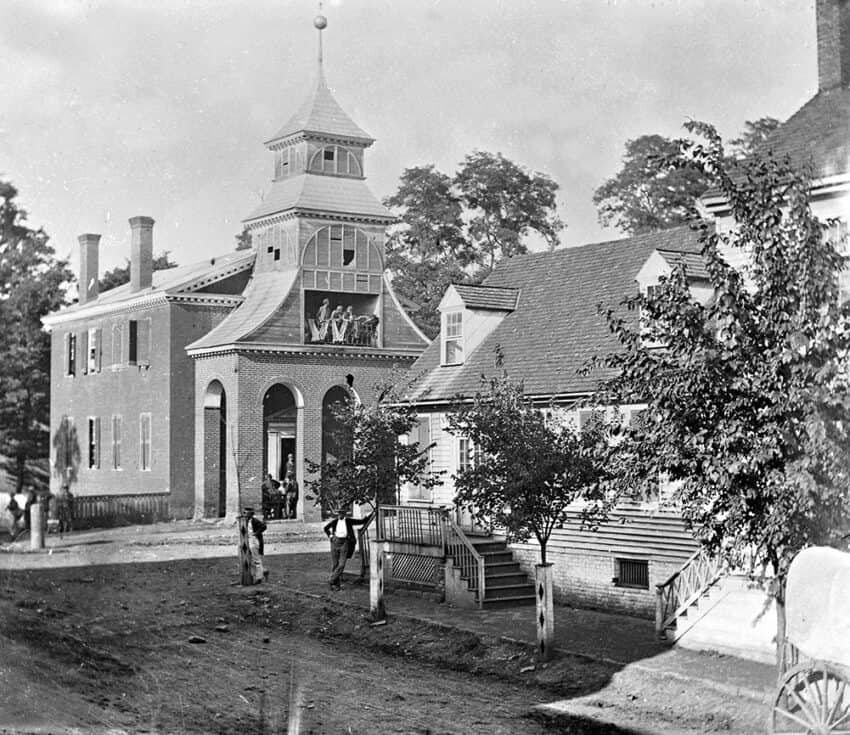September 6, 1863 – September 19, 1863
By Phil Kohn
Phil Kohn can be reached at USCW160@yahoo.com
On September 6, 1863, Gen. Pierre G.T. Beauregard orders the evacuation of Battery Wagner, on Morris Island, off Charleston, South Carolina. The position — under siege since July, and with large numbers of Union infantry poised for an assault before it — is considered no longer defensible. The move leaves Ft. Sumter, in Charleston Harbor, vulnerable. Two days later, on September 8, the fort’s defenders repel an attempted Union amphibious assault.
In the Gulf of Mexico, on September 8, what is often cited as the most one-sided Confederate victory of the war begins. Four Federal gunboats and 18 transport ships carrying 5,000 troops arrive at Sabine Pass, on the Texas-Louisiana border. (Sabine Pass is an outlet to the Gulf of Mexico from Sabine Lake, a bay located about 90 miles east of Houston.) The Federals’ goal is to land infantry and gain a beachhead for an overland campaign against Houston, Galveston and Beaumont. The Confederate defense is a small, unfinished fort (Fort Griffin) manned by 46 artillerymen and six guns of the 1st Texas Heavy Artillery, under the command of Lt. Richard Dowling. The shelling of the gunboats — slowly wending their way through two uncharted, narrow, and shallow channels — by the well-drilled defenders is highly accurate. Within an hour, two Union gunboats are disabled, and one has been run aground. The remaining Union force withdraws to New Orleans without landing a man. The casualties: U.S. — three vessels disabled or captured, 13 heavy cannon (including two Parrott rifles) lost to the Confederates, 24 men killed or badly wounded, 37 men missing, and 315 sailors taken prisoner; C.S. — none. In Virginia, Gen. Robert E. Lee dispatches Lt. Gen. James Longstreet and two of his divisions (roughly 12,000 men) to Georgia by rail to bolster Gen. Braxton Bragg’s force, positioned south of Chattanooga. The move leaves Lee with less than 45,000 men. (Because the rail line to Chattanooga has been cut by the Union takeover of Knoxville, Tennessee, Longstreet’s men must take a very round-about and time-consuming route to get to Bragg.)
On September 9, Maj. Gen. Ambrose Burnside’s Union force encircles Confederate troops at Cumberland Gap, in the mountains between Kentucky and Tennessee. The capture of this location essentially puts eastern Tennessee under Federal control. To the southwest, Maj. Gen. William Rosecrans’s Army of the Cumberland is spread out in three groups, north to south, over 40 miles of mountains. Convinced his force is pursuing fleeing Confederates, Rosecrans is unknowingly moving into a trap set by Confederate Gen. Braxton Bragg. Bragg has gathered his troops at Lafayette, Georgia, south of Chattanooga, and now outnumbering Rosecrans’s force, plans on defeating the three widely separated Federals groups in detail (i.e., one group at a time).
Federal cavalry under Maj. Gen. Frederick Steele on September 10 captures Little Rock, Arkansas, forcing Confederates to establish a new state capital, at Arkadelphia, in the southwestern part of the state. In Georgia, Gen. Braxton Bragg’s Confederates, having set up their clever trap, spring it — ineptly and too soon. Before Maj. Gen. Rosecrans’s widely separated Federals are fully committed to moving through the mountain passes, Bragg orders an attack on one of the three Union groups. Because of slowness by his disgruntled subordinate generals, the attack doesn’t happen. Meanwhile, the other two groups of Federals contact strong bodies of Confederates, realize the Southerners are not retreating, and fall back and re-group.
Gen. Bragg orders attacks on scattered groups of Federals on September 11, and once again, the attacks never materialize, again partly a result of the mutual antagonism between Bragg and his subordinate officers.
At Chattanooga, Maj. Gen. Rosecrans, now realizing that his widely spread-out Army of the Cumberland is in danger, on September 12 orders the two wings of his force to fall back to the center. From Lafayette, Georgia, Gen. Bragg orders Lt. Gen. Leonidas Polk to attack a part of the Union XXI Corps, led by Maj. Gen. Thomas Crittenden, at Lee and Gordon’s Mill on Chickamauga Creek.
In Virginia, Maj. Gen. George Meade moves the Union Army of the Potomac southward across the Rappahannock River on September 13, setting up his headquarters at Culpeper Court House. Because of his diminished troop strength with Longstreet gone, Gen. Lee offers no resistance to the movement. In Georgia, Gen. Bragg — who had ordered Lt. Gen. Leonidas Polk to attack the Union XX1 Corps led by Maj. Gen. Thomas Crittenden — arrives at Chickamauga Creek expecting to find Crittenden’s Union force annihilated, or at least, on the run. Instead, he finds that Polk has never made a move to attack and Crittenden has concentrated and strengthened his force. Once again, Bragg’s plans have been undermined by his subordinates and his trap has failed. Now, he can only wait on the east bank of Chickamauga Creek for reinforcements and for the sure-to-come attack by Federal forces from the north and west.
As Gen. Meade’s move southward has been completed, President Lincoln sends him a message on September 15 that he should attack Lee “at once.” It goes unheeded.
On September 17, a concentrated Union force converges on Lee and Gordon’s Mill on Chickamauga Creek. Gen. Bragg’s plan is to take the offensive: He will cross to the west bank of the Chickamauga, turn Rosecrans’s left flank, and get behind the Army of the Cumberland, cutting off the roads to Chattanooga.
September 18 is the day for Bragg’s major attack. However, he has difficulty in concentrating his forces to get across Chickamauga Creek. Meanwhile, Rosecrans, anticipating Bragg’s plan to flank and get behind him, is concentrating and moving his troops around the battlefield. Extensive cavalry skirmishes break out all along the lines. Because of dense woods in the area, both commanders have difficulty determining the whereabouts of their own troops, let alone the strength and positions of the enemy. In the midst of the chaos, the first of Lt. Gen. Longstreet’s troops arrive from Virginia.
On September 19, Bragg’s Confederates and Rosecrans’s Federals engage in fierce fighting along a six-mile battlefront west of Chickamauga Creek. Not much gain is made by either side. The battle continues for a second day.








